Essential Eco-Friendly Farm Survival Tips
In a world where our environmental footprint is becoming increasingly important, eco-friendly farming is not just a trend; it's a necessity. Sustainable farming practices are vital for ensuring that we can produce food without compromising the health of our planet. But what does it take to thrive in agriculture while being kind to Mother Earth? This article explores key strategies that can help you navigate the challenges of modern farming while embracing eco-friendly methods. Whether you’re a seasoned farmer or a newbie looking to get your hands dirty, these tips will set you on the right path.
Sustainable agriculture is all about finding a balance. It focuses on practices that not only maintain the health of the land but also provide food for our growing population. Imagine a farm where the soil is rich, the water is clean, and the crops are abundant—all while protecting the ecosystem. This is not just a dream; it’s a reality that can be achieved through sustainable practices. The principles of sustainable agriculture include:
- Soil Health: Keeping the soil alive and thriving is crucial.
- Biodiversity: A variety of plants and animals can create a more resilient farm.
- Water Conservation: Efficient use of water helps in maintaining the ecosystem.
- Community Engagement: Working with local communities strengthens the agricultural network.
By adhering to these principles, farmers can ensure that their practices are not only productive but also sustainable for future generations.
Water is life, especially in farming. Efficient water management is vital for eco-friendly farming. Imagine a parched field struggling to grow crops—this is a reality for many farmers facing climate change. However, innovative methods can help conserve water and enhance soil moisture retention. Techniques such as drip irrigation, which delivers water directly to the roots, and rainwater harvesting can make a significant difference. Additionally, implementing mulching can reduce evaporation, keeping moisture in the soil longer.
Pests can be a farmer's worst nightmare, but managing them organically can drastically reduce the need for harmful chemicals. Think of it as creating a balance in nature—using natural predators like ladybugs and birds can help keep pest populations in check. You can also plant companion crops that naturally repel pests. For instance, marigolds are known to deter nematodes. By embracing organic pest management, you're not just protecting your crops; you're also promoting biodiversity.
Healthy soil is the foundation of sustainable farming. It’s like the bedrock of your agricultural success. Techniques such as composting and crop rotation can significantly enhance soil quality. Composting adds nutrients back into the soil, while crop rotation prevents nutrient depletion and disrupts pest cycles. Think of your soil as a living organism; the more you nurture it, the more it will give back.
Planting a variety of crops can improve resilience against pests and diseases. Imagine a field filled with a colorful array of plants—each one playing its role in the ecosystem. Crop rotation not only helps in maintaining soil health but also reduces the risk of crop failure. For instance, rotating legumes with grains can naturally replenish nitrogen in the soil, making it richer for the next planting season.
Utilizing renewable energy can significantly reduce a farm's carbon footprint. Solar panels, wind turbines, and even bioenergy can power your operations sustainably. Imagine harnessing the sun’s energy to power your irrigation system or using wind to generate electricity for your barn—it's not just possible; it's becoming increasingly common. By investing in renewable energy, you're not only cutting costs but also leading the way in sustainable farming practices.
Community Supported Agriculture fosters local connections and sustainable practices. It’s like a symbiotic relationship between farmers and consumers. When you join a CSA, you’re not just buying produce; you’re investing in your community and supporting local farmers. This model encourages sustainable practices and ensures that your food is fresh and seasonal. Plus, it creates a stronger bond between farmers and the people they serve.
Regenerative farming goes beyond sustainability; it seeks to improve ecosystems. Think of it as healing the land rather than just using it. Practices such as cover cropping, agroforestry, and holistic grazing can restore soil health and biodiversity. By embracing these methods, farmers can create a thriving ecosystem that benefits both their crops and the environment.
Q: What is sustainable agriculture?
A: Sustainable agriculture focuses on farming practices that maintain the health of the land while providing food for current and future generations.
Q: How can I conserve water on my farm?
A: Techniques like drip irrigation, rainwater harvesting, and mulching can help conserve water effectively.
Q: What are organic pest management methods?
A: Organic pest management includes using natural predators, companion planting, and organic pesticides to control pest populations without harming the ecosystem.
Q: Why is soil health important?
A: Healthy soil is essential for growing crops effectively, as it provides the necessary nutrients and supports plant growth.
Q: How does Community Supported Agriculture benefit farmers?
A: CSAs provide farmers with a stable income and foster a direct relationship with consumers, promoting local food systems.
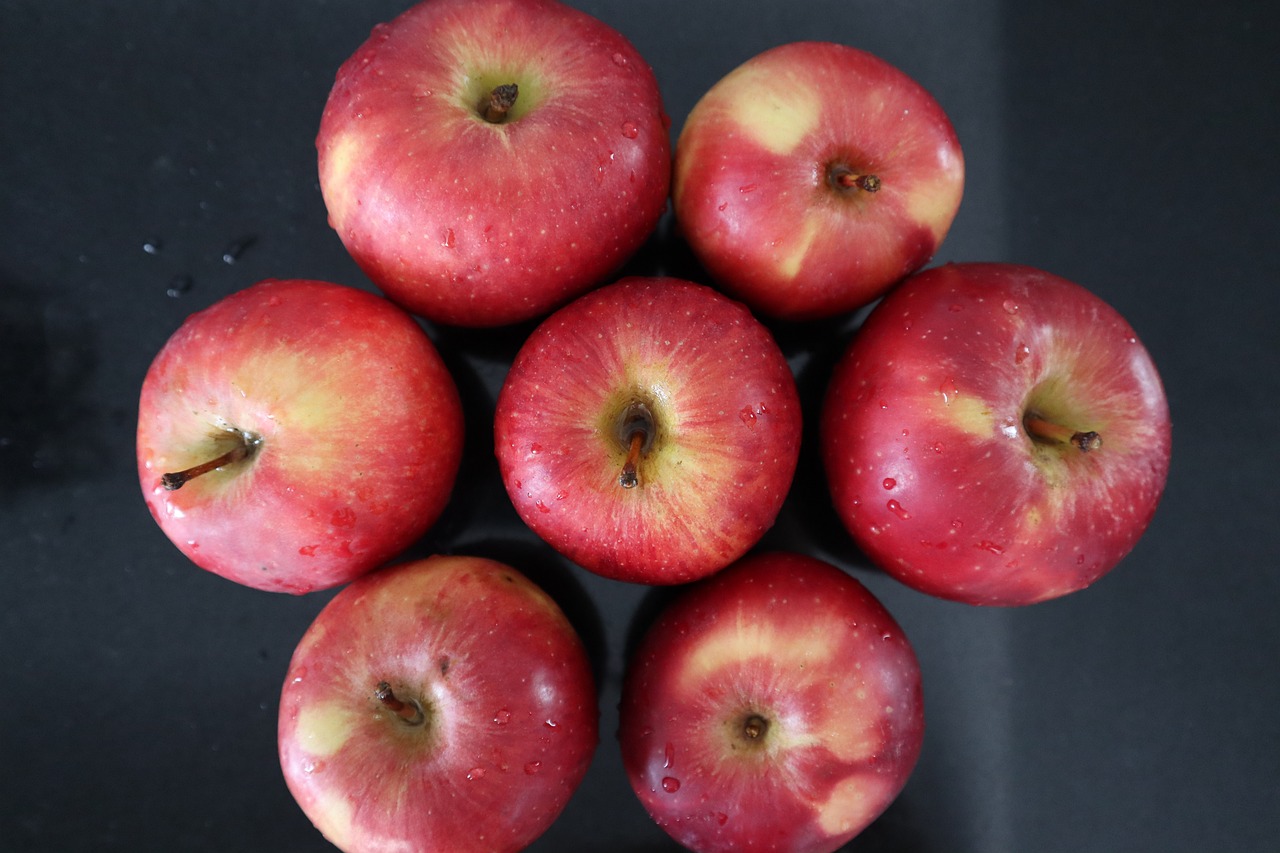
Understanding Sustainable Agriculture
Sustainable agriculture is more than just a buzzword; it's a vital approach to farming that ensures we can feed ourselves today without compromising the ability of future generations to do the same. The core principle of this practice is to create a harmonious relationship between agriculture and the environment. Think of it as a delicate dance where both the farmer and the land must work together to achieve balance. By focusing on practices that maintain the health of the land, sustainable agriculture aims to provide food while preserving natural resources.
One of the key elements of sustainable agriculture is the emphasis on environmental stewardship. This means farmers are not just producers but caretakers of the land. They consider the impact of their practices on soil health, water quality, and biodiversity. For instance, using chemical fertilizers and pesticides may yield short-term gains, but they can lead to long-term soil degradation and water pollution. Instead, sustainable farmers opt for methods that replenish the earth, such as crop rotation and organic fertilizers.
Another important aspect is the focus on economic viability. Sustainable agriculture encourages farmers to adopt practices that are not only good for the environment but also profitable. This means making informed decisions about what crops to plant and how to market them. By engaging in practices like Community Supported Agriculture (CSA), farmers can build strong relationships with their local communities, ensuring a steady income while promoting local food systems.
Social responsibility is also a crucial pillar of sustainable agriculture. It promotes fair treatment of workers and encourages practices that benefit the community. Farmers who embrace sustainability often find themselves involved in local initiatives, helping to educate others about the importance of eco-friendly practices. This community engagement creates a ripple effect, inspiring more people to consider their own impact on the environment.
To better understand sustainable agriculture, let’s break down its main principles:
- Soil Health: Maintaining and improving soil quality is essential for sustainable farming.
- Water Conservation: Efficient use of water resources and practices that enhance soil moisture retention.
- Biodiversity: Encouraging a variety of plants and animals to create a balanced ecosystem.
- Energy Efficiency: Utilizing renewable energy sources and minimizing fossil fuel use.
- Community Engagement: Building relationships with local consumers and supporting local economies.
As we move forward, the importance of sustainable agriculture cannot be overstated. With the world facing challenges like climate change, dwindling resources, and a growing population, adopting these practices is not just beneficial; it's essential. By understanding and implementing sustainable agriculture, we can ensure that farming remains a viable option for generations to come, allowing us to thrive while respecting the planet.

Water Conservation Techniques
Water is the lifeblood of farming, and in an era where climate change is throwing weather patterns into chaos, efficient water management is more crucial than ever. But how do we ensure that every drop counts? Let's dive into some innovative techniques that not only help conserve water but also enhance soil moisture retention, ensuring that our crops thrive even during dry spells.
One of the most effective methods is the practice of drip irrigation. Unlike traditional irrigation methods that waste a significant amount of water, drip irrigation delivers water directly to the roots of the plants. This targeted approach not only minimizes evaporation but also reduces run-off, making every drop work harder for your crops. Imagine giving your plants a refreshing drink right at their roots while leaving the surrounding soil dry—it's like sipping water through a straw instead of gulping it down!
Another technique gaining traction is the use of rainwater harvesting. By collecting and storing rainwater, farmers can create a sustainable water source that reduces reliance on municipal supplies or groundwater. This method is particularly beneficial in regions prone to seasonal rains. Setting up a simple system of gutters and barrels can lead to significant savings and ensure that your farm remains hydrated even during dry spells.
Additionally, mulching is a fantastic way to retain soil moisture. By covering the soil with organic materials like straw, wood chips, or grass clippings, you create a protective barrier that reduces evaporation. Think of it as a cozy blanket for your soil, keeping it warm and moist. Not only does mulching conserve water, but it also suppresses weeds, which means less competition for your crops.
Soil health plays a pivotal role in water retention as well. Implementing practices such as cover cropping can improve soil structure and increase organic matter, allowing the soil to hold more moisture. Cover crops, like clover or rye, act like sponges, soaking up water during rainy seasons and releasing it slowly during drier periods. It’s a win-win situation—improving soil health while conserving water!
Finally, technology can be your ally in water conservation. Smart irrigation systems equipped with sensors can monitor soil moisture levels and automatically adjust watering schedules. This means that you’re not just guessing how much water your crops need; you’re using data to make informed decisions. Imagine having a personal assistant that knows exactly when your plants need a drink!
To summarize, here’s a quick overview of effective water conservation techniques:
| Technique | Description |
|---|---|
| Drip Irrigation | A method that delivers water directly to plant roots, minimizing evaporation and run-off. |
| Rainwater Harvesting | Collecting and storing rainwater for future use, reducing reliance on other water sources. |
| Mulching | Using organic materials to cover soil, reducing evaporation and suppressing weeds. |
| Cover Cropping | Planting crops that improve soil structure and moisture retention. |
| Smart Irrigation Systems | Using technology to monitor soil moisture and adjust watering schedules accordingly. |
Incorporating these water conservation techniques into your farming practices not only helps in sustaining your crops but also plays a vital role in preserving our precious water resources for future generations. Remember, every little effort counts when it comes to creating a sustainable and eco-friendly farming environment!
- Why is water conservation important in farming? Water conservation is essential to ensure sustainable agricultural practices, especially in areas affected by drought and climate change.
- How can I implement drip irrigation on my farm? Drip irrigation systems can be installed with the help of local agricultural suppliers, who can provide guidance based on your specific crop needs.
- What are the benefits of rainwater harvesting? Rainwater harvesting reduces dependency on other water sources, lowers utility costs, and provides a sustainable water supply for irrigation.
- Can mulching help with weed control? Yes, mulching not only conserves water but also suppresses weed growth, allowing your crops to thrive without competition.
- What technology is available for smart irrigation? Many companies offer smart irrigation systems that include soil moisture sensors, weather forecasts, and automated watering schedules.
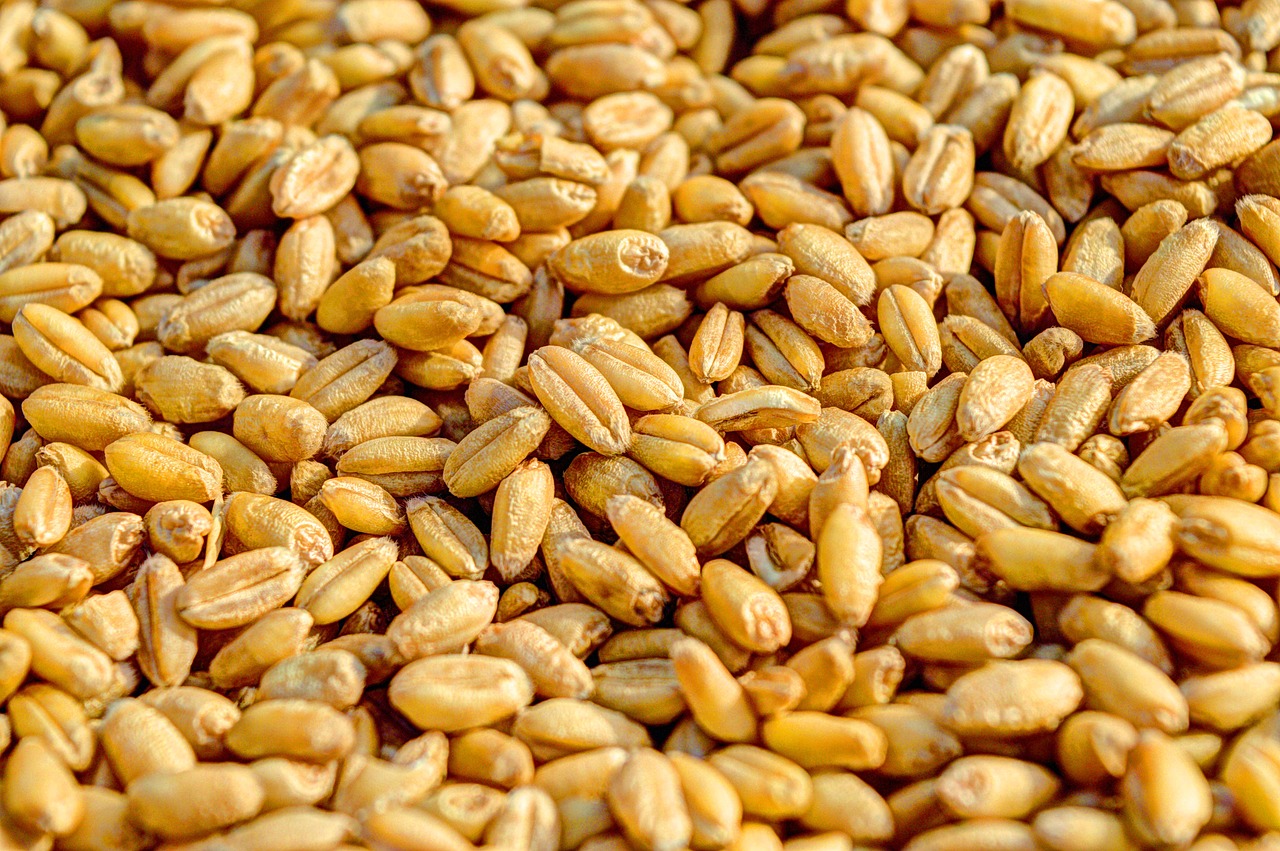
Organic Pest Management
When it comes to farming, pests can feel like unwelcome guests at a party. They show up uninvited, wreaking havoc, and can leave your crops looking more like a battlefield than a bountiful harvest. However, instead of reaching for chemical pesticides that can harm the ecosystem, why not consider ? This approach not only protects your crops but also promotes a healthier environment. Let’s delve into some effective strategies for managing pests organically.
One of the most effective ways to manage pests is through natural predators. Just as we have our own defenses against illness, crops can benefit from having their own bodyguards. Introducing beneficial insects like ladybugs, lacewings, and predatory wasps can help control pest populations. These little warriors feast on aphids, caterpillars, and other harmful insects, keeping your crops safe without the need for harmful chemicals. It’s like having a mini-ecosystem working in your favor!
Another fantastic method is the use of companion planting. This technique involves planting different crops in proximity for mutual benefit. For instance, marigolds are known to repel nematodes and other pests, making them excellent companions for vegetables. By strategically placing these plants together, you create a natural barrier against pests. It’s like having a buddy system for your garden, where each plant helps the other thrive.
Moreover, crop rotation plays a vital role in organic pest management. By changing the types of crops grown in a particular area each season, you disrupt the life cycles of pests that have adapted to specific plants. This practice not only helps in reducing pest populations but also improves soil health. Think of it as a game of musical chairs for pests; they can never settle down because the crops keep changing!
For those who prefer a more hands-on approach, homemade pest repellents can be a game changer. Simple mixtures of soap and water, garlic spray, or even diatomaceous earth can deter pests effectively. These DIY solutions are not only cost-effective but also free from harmful chemicals. Just imagine whipping up a batch of pest spray in your kitchen—how satisfying is that?
It’s essential to remember that organic pest management is not about achieving a perfect, pest-free garden. Instead, it’s about creating a balanced ecosystem where beneficial insects thrive alongside your crops. This balance can lead to a more resilient farm, capable of withstanding pest pressures while maintaining biodiversity.
In summary, organic pest management is a holistic approach that requires a bit of creativity and a lot of patience. By embracing natural methods, farmers can protect their crops while nurturing the environment. It’s a win-win situation that ensures we can enjoy the fruits of our labor without compromising the health of our planet.
- What is organic pest management? Organic pest management involves using natural methods to control pests rather than relying on synthetic chemicals.
- How can I attract beneficial insects to my farm? Planting diverse flowers and herbs can attract beneficial insects. Providing habitats such as insect hotels can also help.
- Is organic pest management effective? Yes! While it may require more effort and planning, organic methods can be very effective in managing pest populations sustainably.
- Can I use chemical pesticides in organic farming? No, organic farming prohibits the use of synthetic pesticides. However, certain natural substances may be allowed.
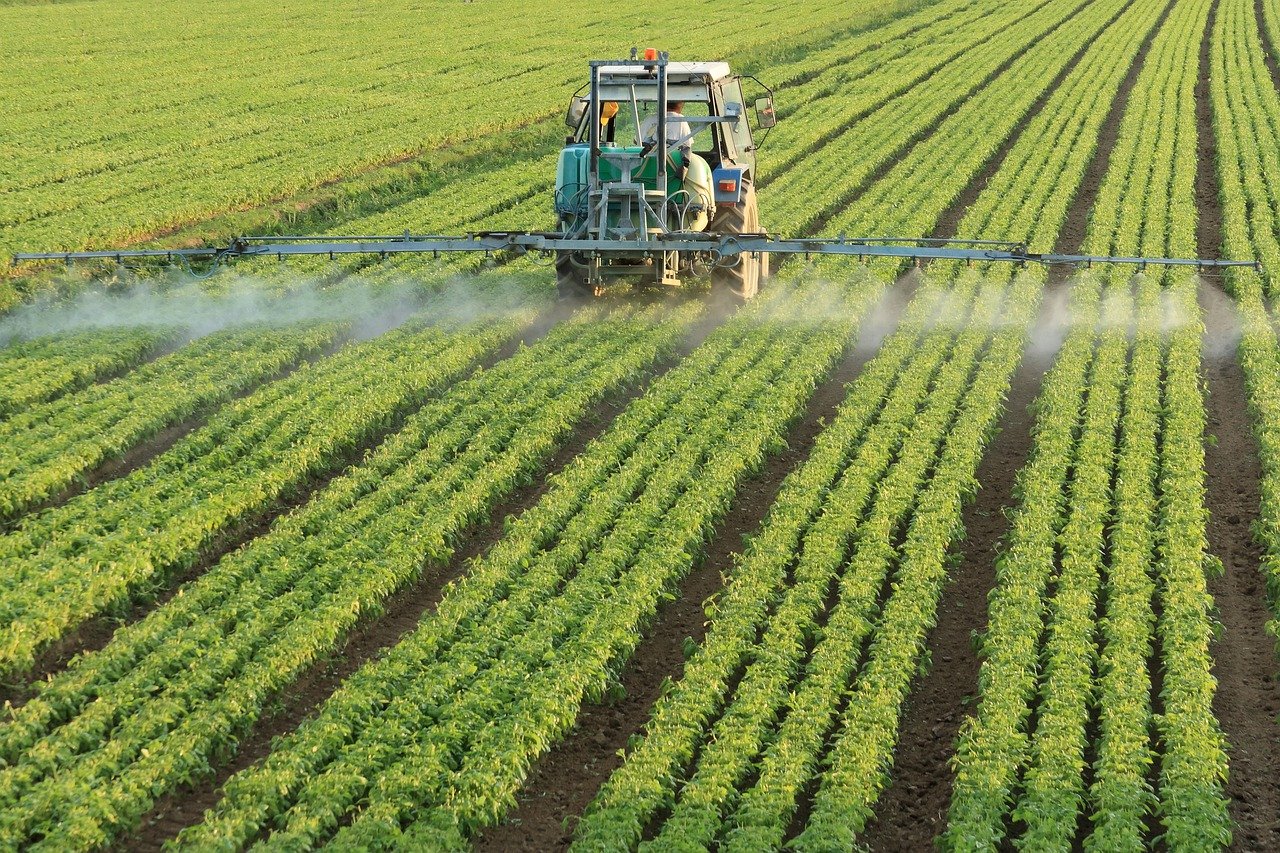
Soil Health Improvement
When it comes to sustainable farming, soil health is the unsung hero. Just think of it as the foundation of a house; without a solid base, everything else crumbles. Healthy soil not only supports crop growth but also plays a crucial role in water retention, nutrient cycling, and carbon storage. So, how do we go about improving soil health? Let's dig into some effective techniques that can transform your farm into a thriving ecosystem.
One of the most powerful methods for enhancing soil quality is composting. By recycling organic matter such as kitchen scraps, yard waste, and even farm residues, you can create a nutrient-rich compost that acts like a superfood for your soil. This process not only enriches the soil with essential nutrients but also improves its structure, making it more aerated and better at retaining moisture. Imagine your soil as a sponge; the more nutrients it has, the more water it can hold, leading to healthier plants.
Another technique is crop rotation. This practice involves alternating the types of crops grown in a particular area from season to season. For instance, following a nitrogen-fixing crop like legumes with a nutrient-demanding crop like corn can significantly boost soil fertility. By rotating crops, you reduce the risk of pest infestations and soil depletion, allowing the land to naturally regenerate. It’s like giving your soil a well-deserved break, allowing it to recover its strength and vitality.
Additionally, incorporating cover crops into your farming routine can work wonders. These are plants grown primarily to cover the soil rather than for harvest. They help prevent erosion, suppress weeds, and enhance soil organic matter. Cover crops act like a protective blanket for your soil, shielding it from harsh weather conditions and reducing nutrient runoff. Popular cover crops include clover, vetch, and rye, each offering unique benefits that contribute to a healthier soil ecosystem.
Let’s not forget about the importance of soil testing. Regularly testing your soil can provide valuable insights into its nutrient composition and pH levels. Armed with this information, you can make informed decisions about what amendments to apply, ensuring that your soil remains balanced and productive. Think of it as a health check-up for your soil; knowing its condition helps you tailor your farming practices to its needs.
In summary, improving soil health is not just a task; it's a commitment to sustainable farming. By implementing practices like composting, crop rotation, cover cropping, and regular soil testing, you’re not only enhancing your farm’s productivity but also contributing to a healthier planet. Remember, healthy soil leads to healthy plants, which in turn leads to a prosperous farm. So, roll up your sleeves and give your soil the care it deserves!
- What are the signs of unhealthy soil?
Signs may include poor plant growth, excessive erosion, and a lack of earthworms. - How often should I test my soil?
It's recommended to test your soil at least once a year, especially before planting seasons. - Can I use chemical fertilizers while improving soil health?
While chemical fertilizers can provide quick nutrients, they may harm long-term soil health. It's better to focus on organic amendments. - What are the benefits of healthy soil?
Healthy soil improves crop yield, enhances water retention, and supports biodiversity.

Crop Diversity and Rotation
are essential strategies in sustainable farming that not only enhance productivity but also promote resilience against pests and diseases. Imagine a farm where a variety of plants coexist, each contributing to the health of the ecosystem. This diversity acts as a natural buffer, reducing the risk of widespread crop failure due to pests or adverse weather conditions. By rotating crops, farmers can disrupt pest life cycles and prevent soil depletion, ensuring that the land remains fertile and productive for years to come.
When we talk about crop rotation, we refer to the practice of alternating the types of crops grown in a specific area across seasons. This simple yet powerful technique can significantly improve soil health. For instance, legumes like peas or beans can fix nitrogen in the soil, making it richer for subsequent crops such as corn or wheat. This not only reduces the need for synthetic fertilizers but also promotes a balanced ecosystem. It's like giving the soil a much-needed spa day, allowing it to rejuvenate and regain its strength.
Additionally, incorporating a variety of crops can lead to enhanced biodiversity. Biodiversity is crucial because it fosters a more resilient agricultural system. Different plants attract different beneficial insects, which can help with pollination and pest control. For example, planting flowers alongside vegetables can attract pollinators like bees, which are vital for the production of many crops. By creating a vibrant and diverse environment, farmers can naturally reduce the reliance on chemical pesticides, leading to healthier produce and a cleaner ecosystem.
To illustrate the benefits of crop diversity and rotation, consider the following table that outlines the advantages of these practices:
| Benefits | Crop Diversity | Crop Rotation |
|---|---|---|
| Soil Health | Improves nutrient availability | Prevents soil depletion |
| Pest Management | Attracts beneficial insects | Disrupts pest life cycles |
| Yield Stability | Reduces risk of total crop failure | Balances crop demands on soil |
| Environmental Impact | Enhances biodiversity | Reduces need for chemical inputs |
In conclusion, embracing is not just a trend; it’s a necessity for sustainable farming. By adopting these practices, farmers can enhance their resilience against the unpredictable nature of agriculture while contributing to a healthier planet. So, why not take a page out of nature's book and let diversity flourish on your farm? After all, a diverse farm is a thriving farm!
- What are the main benefits of crop rotation? Crop rotation helps prevent soil depletion, reduces pest and disease pressure, and improves soil fertility.
- How does crop diversity affect pest management? A diverse range of crops can attract beneficial insects that control pests naturally, reducing the need for chemical pesticides.
- Can crop rotation improve yields? Yes, rotating crops can lead to healthier soil and improved yields by balancing nutrient demands and preventing disease buildup.
- Is it difficult to implement crop diversity on a farm? While it may require some planning, the long-term benefits of crop diversity make it worthwhile for sustainable farming.
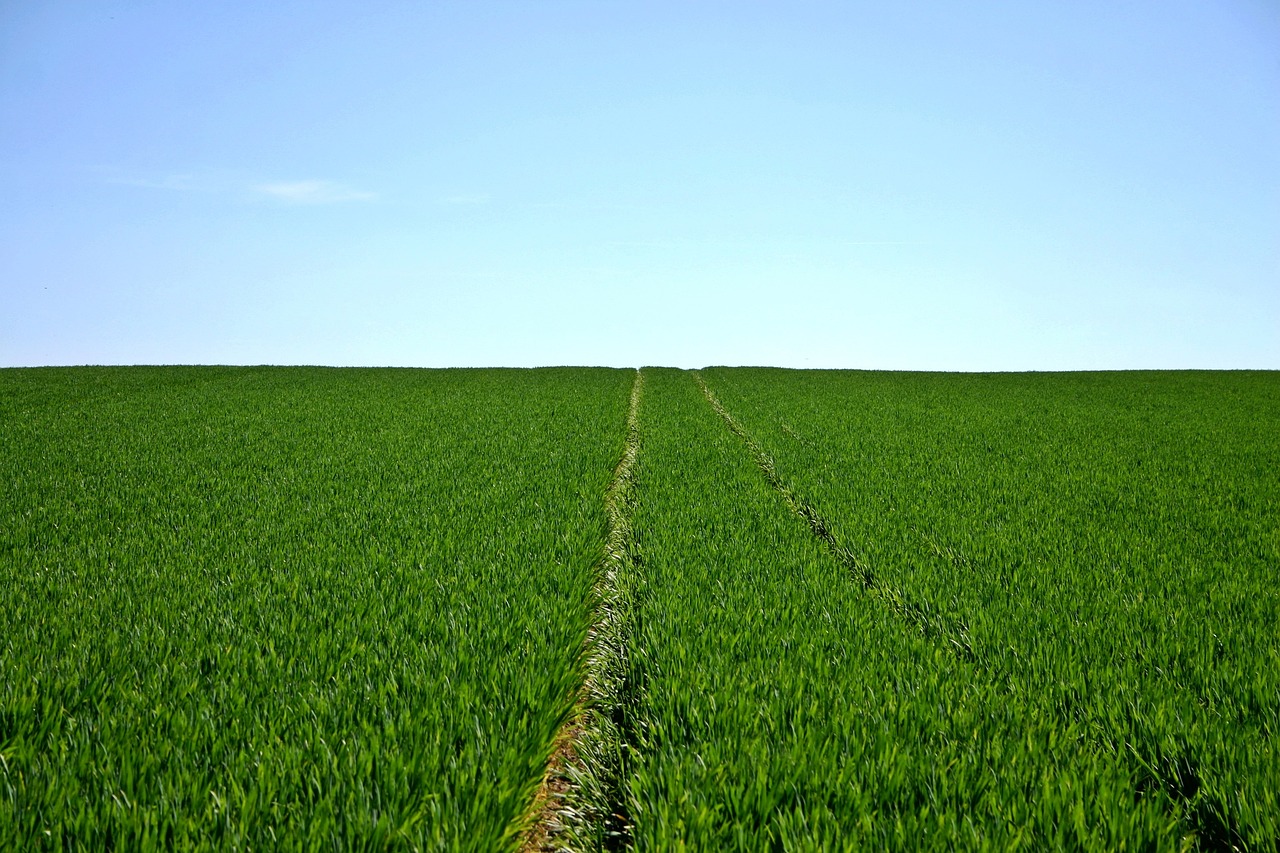
Renewable Energy Sources
In the world of agriculture, the importance of cannot be overstated. As farmers strive to reduce their carbon footprint and embrace more sustainable practices, harnessing energy from natural resources is a game-changer. Imagine a farm that not only feeds the community but also powers itself through the sun, wind, and water! This is not just a dream; it's becoming a reality for many eco-conscious farmers.
One of the most popular renewable energy sources for farms is solar energy. By installing solar panels, farmers can capture sunlight and convert it into electricity. This not only powers their equipment but can also reduce energy bills significantly. In fact, a well-placed solar array can generate enough energy to power an entire farm, freeing up funds for other important initiatives. It's like having a personal power plant right on your property!
Another exciting option is wind energy. Wind turbines can be installed on farms to harness the power of the wind. While this might require a larger initial investment, the long-term savings and benefits are substantial. Wind energy can provide a consistent power supply, especially in areas where the wind blows strong and steady. Think of it as nature’s way of providing free energy, allowing farmers to focus more on their crops and less on their utility bills.
Additionally, farmers can explore biomass energy. This involves using organic materials, such as plant and animal waste, to produce energy. By converting waste into energy, farmers can not only reduce their waste footprint but also create a sustainable energy source. It's a win-win situation! Imagine turning leftover crop residue into fuel that powers your machinery. Talk about efficiency!
To give you a clearer picture of the benefits of renewable energy sources in farming, here's a quick comparison table:
| Energy Source | Benefits | Considerations |
|---|---|---|
| Solar Energy | Reduces electricity costs, low maintenance | Initial installation cost, space requirements |
| Wind Energy | Consistent power supply, renewable | Requires wind assessment, potential noise |
| Biomass Energy | Utilizes waste, reduces landfill use | Requires processing, availability of raw materials |
Integrating these renewable energy sources into farming operations not only promotes sustainability but also enhances the farm's resilience against fluctuating energy prices. As the world shifts towards greener practices, farmers leveraging renewable energy will likely find themselves ahead of the curve. It's like planting seeds today for a bountiful harvest tomorrow.
In conclusion, embracing renewable energy sources is an essential step for farmers looking to create a sustainable future. By investing in solar, wind, or biomass energy, they can reduce their environmental impact while also reaping economic benefits. So, why not consider these options for your farm? After all, the future of agriculture is not just about growing food; it's about growing sustainably.
- What are the main types of renewable energy sources for farms? The main types include solar energy, wind energy, and biomass energy.
- How can solar energy benefit my farm? Solar energy can significantly reduce electricity costs and provide a reliable power source for various farm operations.
- Is wind energy suitable for all farms? Wind energy is most effective in areas with consistent and strong winds, so it's essential to assess your location before investing.
- Can biomass energy really make a difference? Yes! Using organic waste for energy not only reduces waste but also provides a sustainable power source.

Community Supported Agriculture (CSA)
Community Supported Agriculture, or CSA, is a revolutionary approach to farming that connects local farmers directly with consumers. Imagine walking into your kitchen and finding a box brimming with fresh, seasonal produce, all sourced from a farm just down the road. This model not only ensures that you receive the freshest ingredients but also fosters a sense of community and shared responsibility for the land. By participating in a CSA, members typically pay upfront for a share of the harvest, which helps farmers with their operational costs while offering consumers a direct line to their food source.
But why is CSA so important? For one, it encourages local eating, reducing the carbon footprint associated with transporting food long distances. When you buy directly from a farmer, you’re not just getting a meal; you’re investing in your local economy and supporting sustainable practices. This model also promotes biodiversity. Farmers who participate in CSAs often grow a variety of crops, which can lead to healthier ecosystems and a more resilient food system. As a result, you might find yourself enjoying a wider range of vegetables than you would typically buy at the grocery store!
Another significant benefit of CSAs is the relationship they foster between farmers and consumers. Through regular newsletters, farm visits, and community events, members become more informed about where their food comes from and how it’s grown. This connection can lead to a deeper appreciation for food and a stronger commitment to sustainable practices. It’s not just about buying produce; it’s about being part of a community that values health, sustainability, and local agriculture.
However, joining a CSA isn’t without its challenges. Members might receive an abundance of one type of vegetable in a given week, leading to the question: “What do I do with all these turnips?” This is where the community aspect shines. Many CSAs provide recipes, cooking tips, and even workshops to help members make the most of their shares. Plus, sharing ideas and recipes with fellow members can turn a challenge into a fun culinary adventure!
In conclusion, Community Supported Agriculture is more than just a trend; it's a vital part of building a sustainable future. By supporting local farmers and embracing seasonal eating, you’re not only nourishing yourself but also contributing to a healthier planet. So, why not find a CSA near you and experience the joy of fresh, local produce while forming meaningful connections with your community?
What is a CSA?
A Community Supported Agriculture (CSA) program allows consumers to purchase shares of a farm's harvest in advance, ensuring they receive fresh produce throughout the growing season.
How does a CSA work?
Members pay upfront for a share of the farm's produce, which is then distributed periodically, often weekly or bi-weekly, during the harvest season.
What are the benefits of joining a CSA?
Joining a CSA supports local farmers, reduces food miles, promotes seasonal eating, and fosters a strong community connection.
What if I can't use all the produce I receive?
Many CSAs offer recipes and cooking tips to help you utilize all your produce. You can also share with friends or neighbors or even preserve some for later use!
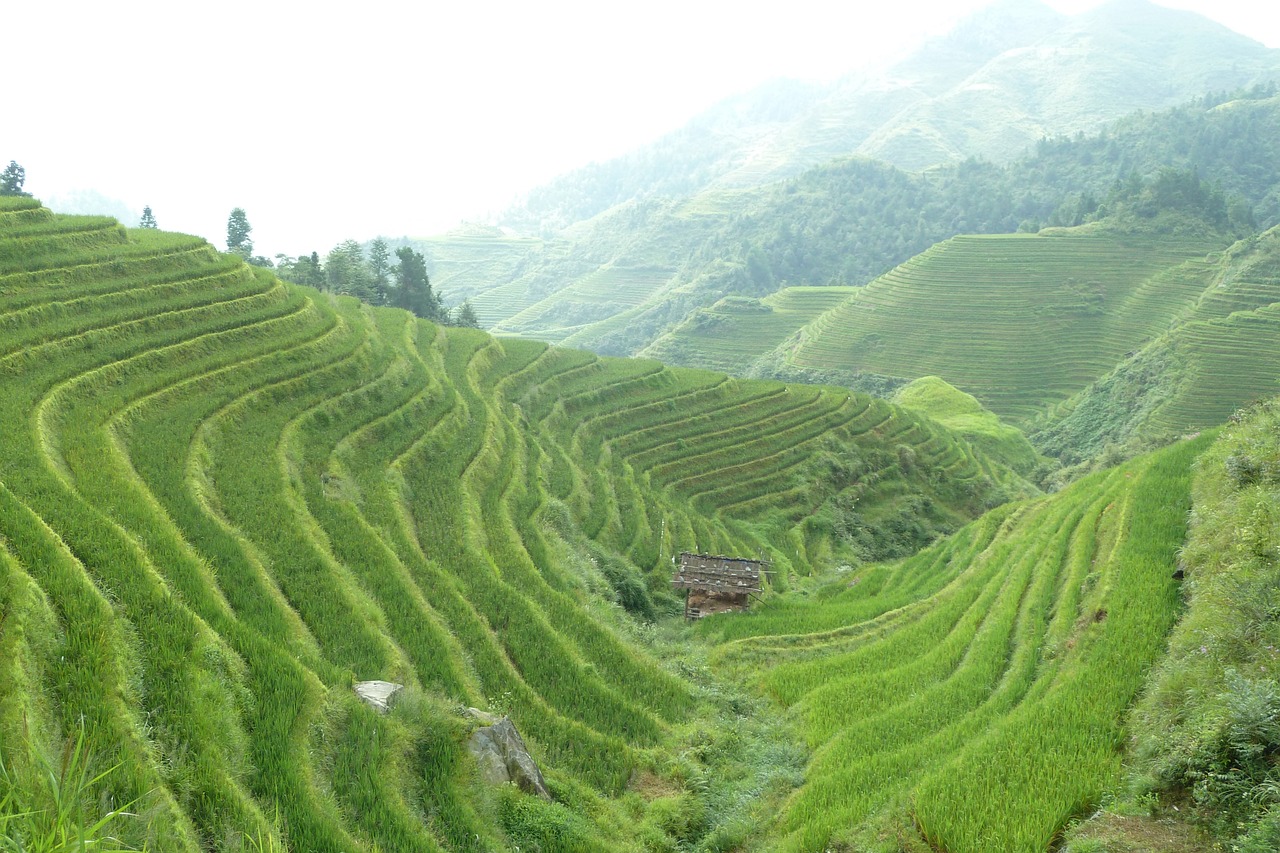
Regenerative Farming Practices
Regenerative farming practices are like a breath of fresh air for the agricultural world. Unlike traditional farming methods that often deplete the soil and harm ecosystems, regenerative practices aim to restore and rejuvenate the land. Imagine your farm not just surviving but thriving, becoming a vibrant ecosystem that supports a variety of life forms. This approach is all about working with nature rather than against it, allowing the land to heal and flourish over time.
At the heart of regenerative farming is the concept of soil health. Healthy soil is teeming with microorganisms that break down organic matter, making nutrients readily available for plants. By implementing practices like cover cropping, farmers can protect the soil from erosion while simultaneously enhancing its nutrient content. Cover crops, such as clover or vetch, act like a protective blanket, helping to retain moisture and prevent weeds. Additionally, they fix nitrogen in the soil, naturally enriching it without the need for synthetic fertilizers.
Another key element of regenerative farming is holistic grazing management. This technique involves moving livestock around pastures in a way that mimics natural grazing patterns. By allowing animals to graze in a rotational manner, farmers can promote biodiversity and improve pasture health. As livestock graze, they naturally fertilize the land, and their movement helps to aerate the soil, facilitating better water infiltration. This method not only benefits the land but also produces healthier animals and higher-quality meat and dairy products.
Furthermore, regenerative practices encourage agroforestry, which integrates trees and shrubs into agricultural landscapes. This not only provides shade and habitat for wildlife but also contributes to soil stability and moisture retention. Think of it as creating a mini-ecosystem where crops, trees, and animals coexist harmoniously, each playing a role in the health of the environment.
One of the most exciting aspects of regenerative farming is its potential for carbon sequestration. By improving soil health and increasing organic matter, regenerative practices can capture carbon dioxide from the atmosphere and store it in the soil. This not only helps combat climate change but also enhances the farm's productivity in the long run. Farmers can actually become stewards of the environment, turning their land into a carbon sink instead of a source of emissions.
To illustrate the benefits of regenerative farming, consider the following table that compares traditional farming practices with regenerative practices:
| Aspect | Traditional Farming | Regenerative Farming |
|---|---|---|
| Soil Health | Depleted nutrients, erosion | Rich in nutrients, improved structure |
| Biodiversity | Low diversity, monoculture | High diversity, multiple crops |
| Carbon Emissions | High emissions | Carbon sequestration potential |
| Water Retention | Low retention, high runoff | Improved retention, reduced runoff |
In conclusion, adopting regenerative farming practices is not just a trend; it's a vital step toward a sustainable future. By focusing on soil health, biodiversity, and ecological balance, farmers can create resilient systems that benefit both the environment and their livelihoods. As we move forward, it’s essential to embrace these practices, ensuring that our agricultural systems are not only productive but also nurturing for generations to come.
- What is regenerative farming? Regenerative farming focuses on restoring soil health and biodiversity while enhancing the ecosystem.
- How does regenerative farming benefit the environment? It improves soil quality, increases carbon sequestration, and promotes biodiversity.
- Can regenerative farming be profitable? Yes, it can lead to healthier crops and livestock, potentially increasing profitability in the long run.
- What are some examples of regenerative practices? Cover cropping, holistic grazing, and agroforestry are all effective regenerative practices.
Frequently Asked Questions
- What is sustainable agriculture?
Sustainable agriculture is all about farming practices that are not just focused on productivity but also on maintaining the health of the land. It emphasizes methods that protect the environment, promote biodiversity, and ensure that future generations can continue to farm effectively. Think of it as a way to farm that respects nature while still putting food on our tables!
- How can I conserve water on my farm?
Water conservation is crucial, especially with changing climates. You can implement techniques like drip irrigation, which delivers water directly to the plant roots, or rainwater harvesting systems to collect and store rainwater. Mulching is another great method to reduce evaporation and keep soil moisture intact. Imagine your farm as a sponge that soaks up every drop of water!
- What are organic pest management techniques?
Organic pest management involves using natural methods to control pests without harmful chemicals. This can include introducing beneficial insects, using plant-based repellents, or even setting up traps. It's like inviting nature to do the heavy lifting for you while keeping your crops safe!
- Why is soil health important for farming?
Healthy soil is the backbone of any successful farm. It supports plant growth, retains moisture, and helps break down organic matter. Improving soil health through composting, crop rotation, and cover cropping can lead to higher yields and a more resilient farming system. Think of your soil as the foundation of a house – it needs to be strong to support everything above it!
- What are the benefits of crop diversity and rotation?
Crop diversity and rotation can significantly enhance the resilience of your farm. By planting a variety of crops, you can reduce the risk of pests and diseases that target specific plants. It’s like having a diverse group of friends – they support each other and help you tackle challenges more effectively!
- How can renewable energy be used in agriculture?
Renewable energy sources like solar panels or wind turbines can drastically cut down on a farm's carbon footprint. By harnessing these natural energy sources, farmers can power their operations sustainably. Imagine your farm running on sunshine – how cool is that?
- What is Community Supported Agriculture (CSA)?
Community Supported Agriculture (CSA) is a system where consumers buy shares of a farm's harvest in advance. This creates a direct connection between farmers and consumers, allowing for fresher produce and supporting local economies. It’s like having a farm buddy who shares their bounty with you every season!
- What are regenerative farming practices?
Regenerative farming goes beyond sustainability by actively restoring ecosystems. Practices such as agroforestry, holistic grazing, and permaculture aim to improve soil health and biodiversity. Think of it as giving back to the earth while still reaping the benefits of farming – a win-win situation!



















